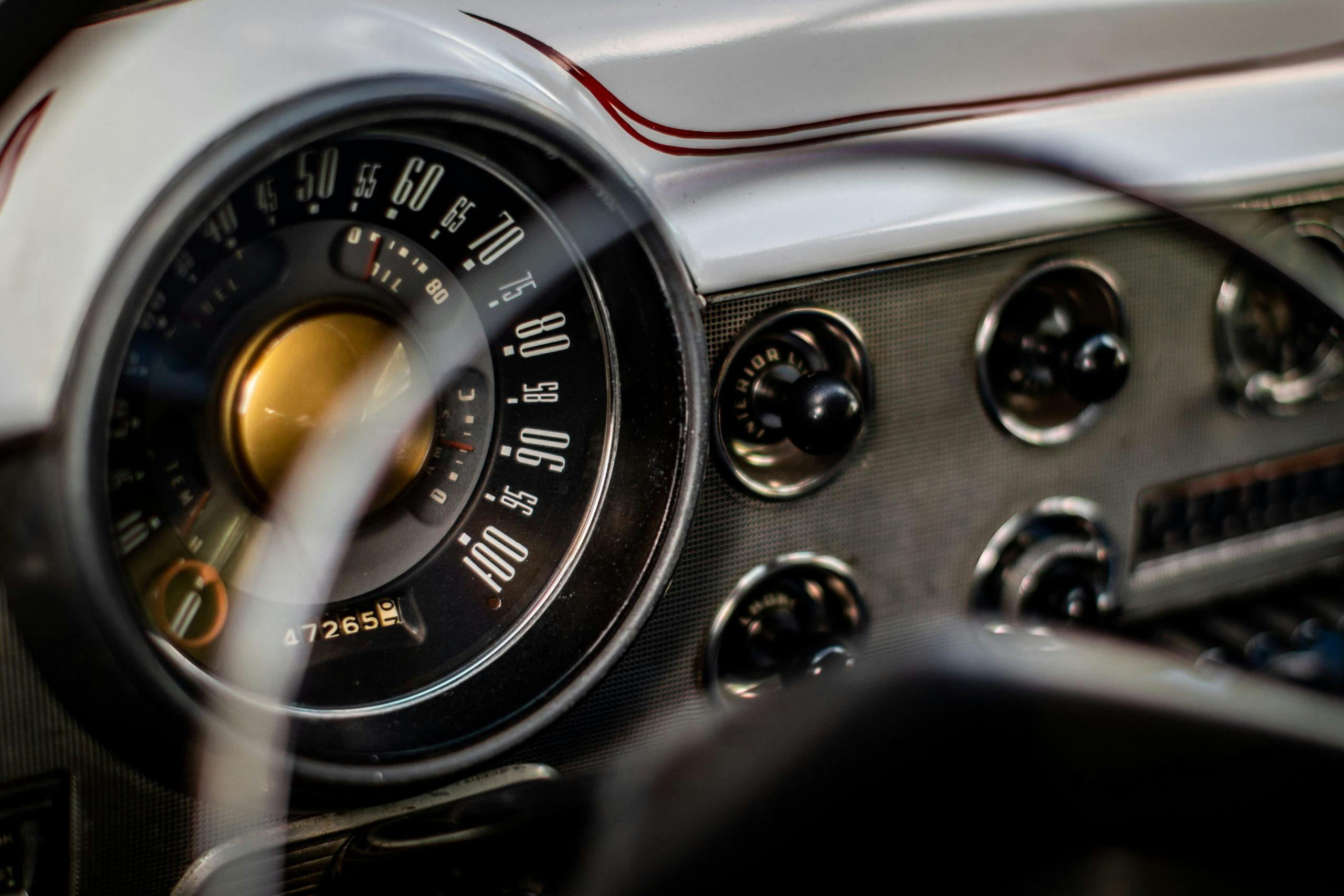Media | Articles
The shoebox that saved Ford remains affordable today
Long before Henry Ford II kicked Enzo Ferrari’s butt at Le Mans, he saved the family business.
The son of Edsel became president of Ford Motor Company in 1945. He wasn’t even 30 at the time. The war had finally come to an end, but the company was bleeding badly. In early 1946, its longtime chief stylist, Eugene T. “Bob” Gregorie, blew the dust off some designs he had penned before America entered the war, but The Deuce and his young team of executives weren’t impressed.
Although Gregorie had overseen the creation of such magnificence as Edsel’s personal Model 40 Special Speedster hot rod and the 1939 Lincoln Continental, his designs were viewed as old-fashioned, too big, too bulky. Within weeks, a new, more forward-thinking design was being fine-tuned. It was created by an outside firm led by George Walker, and it reached production in just two short years.

Ford’s new “Forty-Niner” was first shown to the public on June 8, 1948, at the Waldorf Astoria hotel in New York City. Its radical sheetmetal featured integrated front and rear fenders, a wide-mouth chrome grille with a large “bullet” in its center, and small oval taillamps that dramatically drove a spear into its quarter panels. It was the first Ford without running boards, it utilized coil springs rather than transverse leafs, and an exposed driveshaft took the place of the old torque tube.
Quickly nicknamed the “shoebox” for its slab sides, Ford’s new car was simple, elegant, exceedingly modern, and an instant hit. More than a million were sold in the first 18 months. And like the even more radically shaped 1949 Mercury, it soon became a favorite among young hot-rodders, who not only appreciated its sleek design—which to them looked customized right from the factory—but also its optional 100-hp flathead V-8. An inline six-cylinder was standard on most models, but the V-8 powered the majority of the cars sold.
Marketplace
Buy and sell classics with confidence

Nine body styles were originally offered, including a four-door sedan; two-door sedan; a business coupe; a convertible; and a steel-bodied two-door station wagon with real wood trim, which was called the Country Squire starting in 1951.
For 1950, Ford stiffened the body, concealed the trunk hinges, hid the fuel filler, added push-button door handles, and introduced its “Keystone” logo, now displayed on the hood of every new model. It also rejiggered the trim levels. The Standard base trim became the Deluxe line, and the Custom became the Custom Deluxe. A special edition of the Tudor called the Crestliner was created to rival the Chevy Bel Air. It featured a rather clumsy two-tone paint effect with a side cove framed by stainless-steel trim and a vinyl roof. Just 17,601 were sold.
The following year, Ford added a second bullet to the grille and introduced its first pillarless hardtop, the immediately popular Custom Deluxe Victoria. Innovations like the Ford-O-Matic three-speed automatic transmission and turnkey ignition debuted, and most models got a redesigned dashboard.
Over its three-year production run, more than 3,000,000 shoebox Fords were produced, and there are still plenty to go around. Although convertibles and wagons trade for well beyond $15,000, the other body styles, including hardtops, generally sell for less in #3 (Good) condition.
Although Hollywood has chosen to celebrate The Deuce’s exploits as a race team owner, his real victory was putting Americans back on the road in a stylish, affordable shoebox.
1951 Ford Custom Deluxe Club Coupe
Engine: V-8, 239 cid
Power: 100 hp @ 3600 rpm
Torque: 187 lb-ft @ 1800 rpm
Weight: 3000 lb
0–60 mph: 17 sec
Top speed: 85 mph
Price when new: $1590
Hagerty #3 value: $11,000–$16,000




































where can I sell a 1950 for box coupe 14000 miles